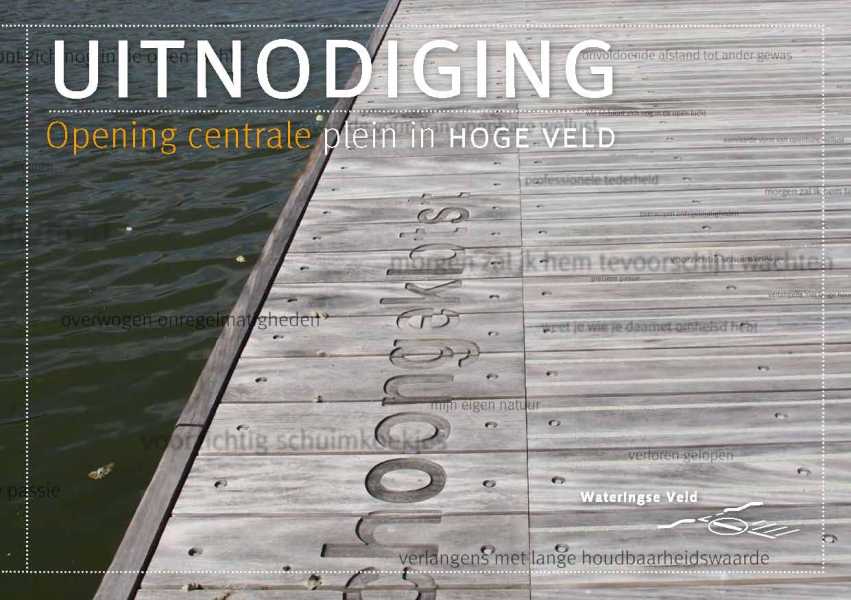Ton van Kints
Vinexlocation Wateringse Veld
Location: Wateringseveld, The Hague
Stroom advises and mediates in large-scale urban development projects, such as the development of the Vinex locations Leidschenveen, Wateringse Veld and Ypenburg. ‘Artistic' activities that take place in the public space of the city are also often initiated from liveability funds. Stroom is often involved in these projects differently depending on the situation. At the request of the Development Combination Wateringse Veld, Stroom developed an arts plan for this Vinex location in 1996, which was then under construction (a Vinex district with a total of 8000 homes). ‘Light', ‘water', ‘nature' and ‘mobility' are the leading themes in the art projects in Wateringse Veld.
In a new part of Wateringse Veld, Wateringse Binnentuinen, works of art are placed on the bridges of three ceramicists: Dora Dolz (†), Wietske van Leeuwen and Tejo Philips. These were produced in 2008 and 2009. Due to the delayed sale of the houses, the artworks are temporarily stored by the municipality of The Hague and will be placed later in 2010.
At the end of September 2010, ‘John Wayne', a life-size equestrian statue of QS Serafijn, was placed in the water in the Hoge Veld area. The work also consists of a novel for and about the neighbourhood.
Marjan Schoenmakers
Schoenmakers was commissioned in 2001 for the northern part of the Wateringse Veld. She drew up a text plan, in which a subtle poetry of texts and words is spread over the entire area. The texts are partly from her own ‘Words Archive' and partly derived from conversations with future residents, with the subject of disappearance (greenhouses and pasture) and appearance (houses, gardens and parks). For the Hoge Veld, she milled intriguing texts into wooden decking in 2010. They are fragments of conversations she had with new residents from the neighbourhood. Sometimes the words rhyme with the texts previously applied to the concrete quay walls on the other side of the water.
Herman de Vries' 'Tree Museum' is slowly growing along with the construction of the street plan, but seems to be a vulnerable project. Because the aim is to plant as many types of trees as possible, risks are deliberately taken. The names of the trees and an image of the leaves are depicted on tiles in the street.
In 2003, Eric de Lyon's water tables were put into operation. As long as the De Eilanden housing project was not ready, the water along the Bovendijk was held back by a dam. When the houses were completed, the dam was dug away, the water level was brought up to standard and the pumps were put into operation.
Reinier Tweebeeke's illuminated gates were completed in 2001. In the period thereafter, the technology turned out to be quite maintenance-sensitive. In addition, a certain position of the lamps caused quite a bit of inconvenience for some residents because the light shines into the room.
In 1996, artists Ton van Kints and Cary Markerink inventoried the characteristics of the current horticultural and greenhouse area. Ton van Kints used colour photographs to illustrate how the living and working worlds of the gardeners merge. Cary Markerink documented in black and white the characteristics that define the image of this area: the cultivated nature, the greenhouses, the facades and industrial elements such as chimneys and transformer houses.








